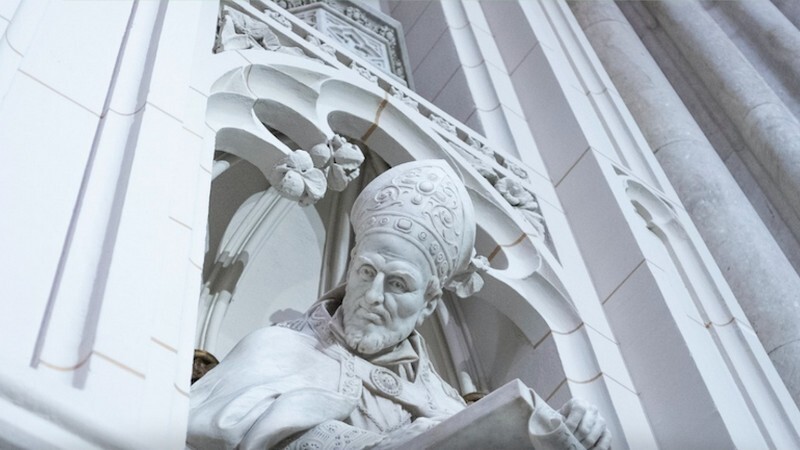
St. Patrick's Cathedral in New York. | Drew Beamer/Unsplash
Since St. Patrick is credited with bringing Christianity to pagans, it's fitting that the Catholic Church recognize him on the day otherwise marked by wearing green and talking about the luck of the Irish.
The Archdiocese of Milwaukee celebrated St. Patrick's Day Thursday with a special Mass.
"Happy St. Patrick's Day!" the archdiocese said in a Thursday Facebook post. "Begin your St. Patrick's Day celebration by attending Mass at one of our four St. Patrick parishes. Pray and thank him for his unwavering faith and desire to serve God."
St. Patrick was born in Britain, near the end of the 4th century, to a well-to-do family, a history.com report said this week. At 16, Irish raiders captured Patrick and carted him off to Ireland. He was a slave for six years, often working in isolation as a shepherd. Suffering in such loneliness, he often called on his faith to get through life's challenges. Eventually, God came to him in a dream, telling Patrick that it was time to escape and return to Britain. Patrick is said to have walked approximately 200 miles to meet God's task. Back in Britain, God later instructed him to return to Ireland as a missionary.
Ireland was largely pagan at the time, a report on Franciscan Media said. Though that presented challenges, Patrick dreamed that all the children of Ireland were reaching out their hands to him, and he was committed to his ministry. He continued his studies, became a bishop and returned to Ireland.
In the midst of opposition from some of the Irish pagans, Patrick converted many to Christianity. He ordained priests, founded monasteries, established dioceses and held meetings. Patrick is the patron saint of Ireland and of engineers.
Many myths and legends are connected to St. Patrick, a Britannica report said. One such legend is that he drove all the snakes out of Ireland. Patrick is also credited with raising 33 people from the dead.
In teaching people about the concept of the Holy Trinity, Patrick used shamrocks—the native flower of Ireland—to convey his message.






 Alerts Sign-up
Alerts Sign-up